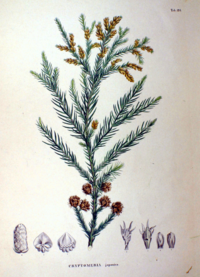
Photo from wikipedia
Fossil elephantimorph proboscideans are very common in Miocene faunas of East Asia. However, their evolution and migration associated with ecological pressure have been studied little, especially in China. In the… Click to show full abstract
Fossil elephantimorph proboscideans are very common in Miocene faunas of East Asia. However, their evolution and migration associated with ecological pressure have been studied little, especially in China. In the present article, analyses of the dynamics of the elephantimorph genera of northern and southern China were performed. The results indicate considerable depression of elephantimorph proboscidean diversity in northern China and continuous success of this group in the Yunnan region (southern China) during the late Miocene. Notably, all trilophodont elephantimorph proboscideans were extinct by the end of the middle Miocene in northern China and did not recover until the latest Miocene. However, trilophodont and tetralophodont elephantimorph proboscideans coexisted throughout the late Miocene in the Yunnan region. Therefore, we interpret the Yunnan region as a late Miocene refuge for proboscideans, especially trilophodonts, from severe aridity in northern China caused by uplift of the Tibetan Plateau and retreat of the Paratethys Sea. Further analysis of the dynamics of coexisting genera indicates that the components of elephantimorph proboscidean assemblages in northern China display patterns distinct from those of Yunnan/Southeast Asia and Siwalik. Therefore, ecological barriers between northern China and Siwalik and between northern China and Yunnan/Southeast Asia are hypothesized to have existed by as early as the middle Miocene. The latter barrier occasionally opened, e.g. at the boundary between the middle and late Miocene, and thus provided a pathway for the survival of trilophodont proboscideans escaping from ecological pressures in northern China.
Journal Title: Palaeogeography, Palaeoclimatology, Palaeoecology
Year Published: 2019
Link to full text (if available)
Share on Social Media: Sign Up to like & get
recommendations!